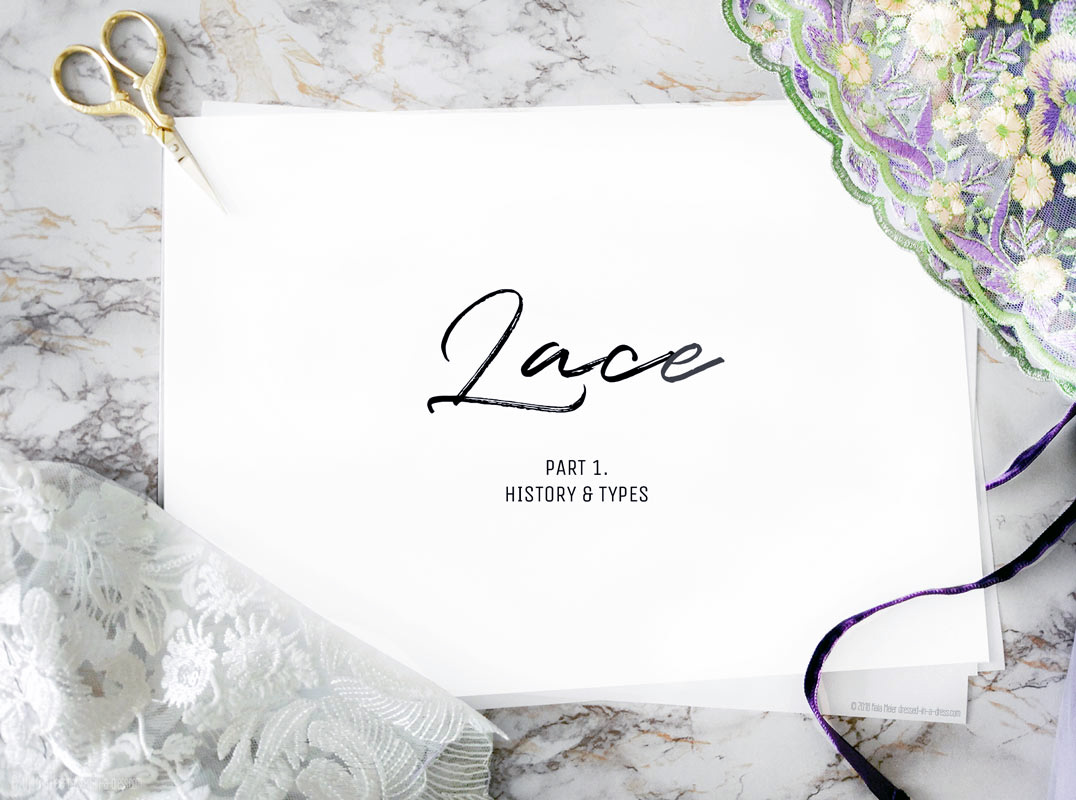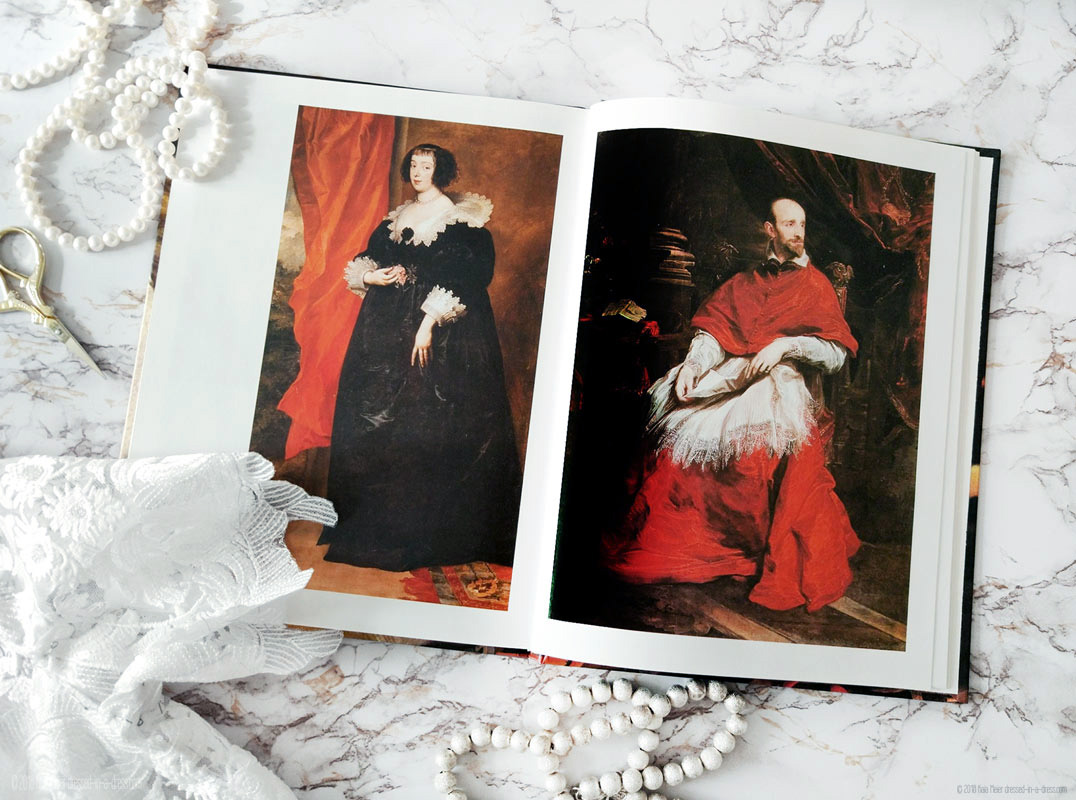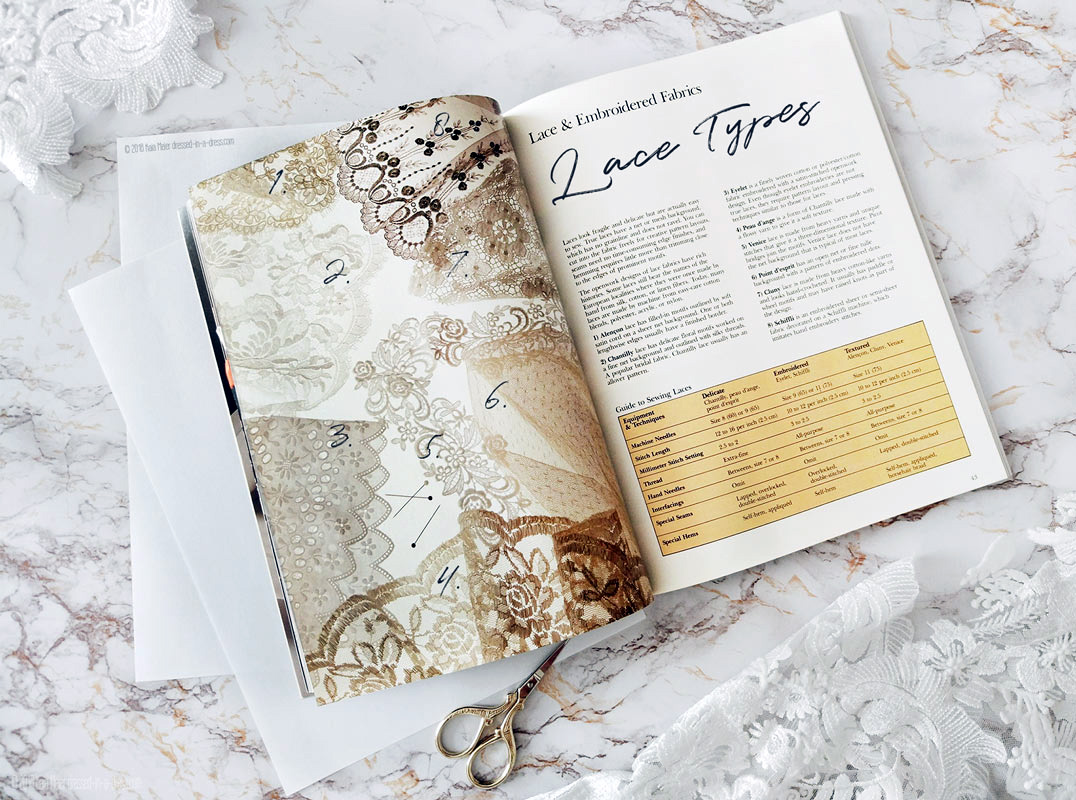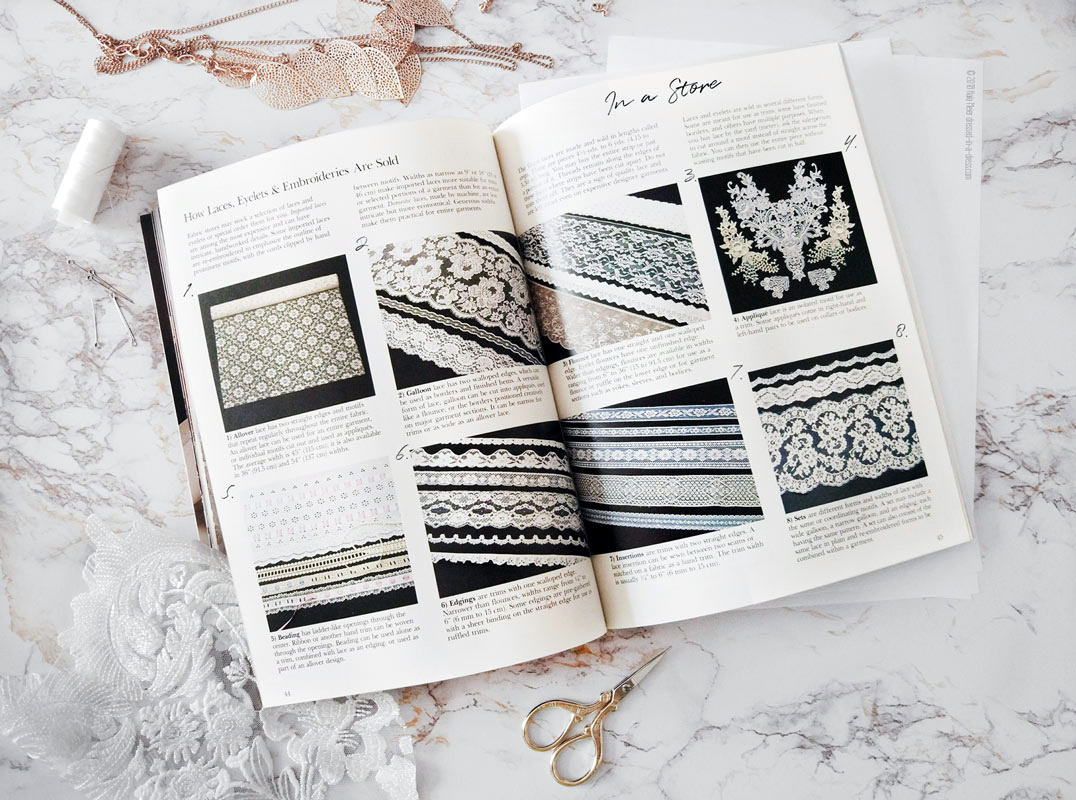Lace & Embroidered Fabric. Part 1. History & Types
Category: Fabrics 16 September 19

Prologue
I bought the pansies-strewn fabric impulsively without a clear idea, just because I liked it, and hadn’t worked with lace before. For the last reason, the fabric safely lay in the box for another year. Once a couple of months I took it out, chaotically draped on myself and without the desired result put it back. I knew it would be a dress, but what dress – that was the question.
At the beginning of the year, I successfully found the fabrics for 2 future wedding dresses: embroidered batiste and lace decorated with sequins. The second one puzzled me again because I did not know how to start and how not to spoil the motifs with seams. But ideas about the designs came to me immediately: a flying skirt and a bodice in Elie Saab style – for the batiste, and a laconic fitted dress with short sleeves for the lace.
In spring, I got ready and finally started making a toile for the wedding dress. I work slowly, and the importance of the upcoming event has started to press on me. So, if I start in spring, I’ll finish by fall – I thought, cutting the bodice.
By the time when I got to the wedding dress sleeve, it struck me: short sleeves with lace ruffles, a fitted bodice slightly gathered at the waist, and a gathered skirt. The less detail, the brighter the lilac lace, that is waiting for its hour, will play. and it was not in vain. And I’ll deal with difficulties and questions with time – I will flip through book pages or search on the Internet. The truth is that the articles I found were not so informative. Therefore, here I write my notes and reflections.
History
Lace is a delicate fabric made of yarn or thread in an open weblike pattern. Originally linen, silk, gold, or silver threads were used. Now lace is often made with cotton thread, although linen and silk threads are still available. Manufactured lace may be made of synthetic fiber.
Wikipedia
Since the creation, lace was a luxury item due to painstaking and laborious work. Until the 18th century, lace was worn by men, women and children. The higher the status of a person was, the more exquisite, intricate and lush were the laces in his or her clothes.

Sir Anthony van Dyck (1599-1641) Left: Margaret of Lorraine, Duchess of Orléans, c. 1634-40. Right: Portrait of Cardinal Bentivogli, 1625.
While writing this, I read 3 articles on lace: from Wikipedia, SFO Museum and Owlcation. The first two say that production of lace began simultaneously in Italy and Flanders (the region on the border of Belgium and France) in the 16th century. The third resource writes about the 15th century.
Until the end of the 15th century, there was no lace in today’s understanding (although, perhaps, the prototype of lace appeared at the time of the ancient Romans). The masters created open patterns that remotely resembled lace: they applied a pattern to the fabric, removed a part of the threads inside it, and then decorated the edges with embroidery.
At the same time, two lace techniques appeared: needle lace and bobbin lace. In the first case, one needle and one thread participate in the work, and in the second case, several threads intertwine. At first, the masters used linen threads, and then silk and gold. In the 19th-century cotton lace appeared.
To create expensive laces artisans of 3 specialities worked together: the artist created a design on paper, the patternmaker transferred the design onto parchment, and the lacemaker turned the idea into life. Italy, Flanders and France were the heart of the lace industry.
Lace types
Lace is the most fascinating and versatile fabric. It can be used for an entire garment, trims or small details. There are many different varieties of lace available today. The openwork designs of lace fabrics still bear the names of the European localities where they were once created by hand. Nowadays almost all the lace is machine-made. This intricate fabric became affordable from the highly expensive it was earlier. Here are the most common lace types I see in the fabric stores.

Sewing Specialty Fabrics (Singer Sewing Reference Library) by Contemporary Books (March 1, 1996)
- Chantilly lace has delicate floral motifs placed on a fine net background. Silky threads outline them.
- Alençon lace has filled-in motifs outlined by a soft satin cord on a sheer net background. One or both lengthwise edges have a finished border.
- Eyelet* is a cotton or polyester/cotton blend fabric embroidered with a satin-stitched openwork design.
- Peau d’ange is a form of Chantilly lace made with flossy yarn to give it a soft texture.
- Venice lace is made from heavy yarns and unique stitches that give it a three-dimensional texture. This lace doesn’t have a background, and the motifs join together with the picot bridges.
- Point d’esprit has an open net or fine tulle background with a pattern of embroidered dots.
- Cluny lace is made from heavy cotton-like yarns and looks hand-crocheted. It usually has paddle or wheel motifs and may have raised knots as part of the design.
- Schiffli is an embroidered sheer or semi-sheer fabric decorated on a Schiffli machine, which imitates hand embroidery stitches.
*This is not a true lace, according to the definition, but this fabric requires the same techniques in pattern layout.
Searching for information I came across a couple of web-sites with excellent illustrations of lace: the first is the blog of a wedding shop, and the second is the page of professional dry cleaning.
In a store
Laces, Eyelet and Embroideries are sold in various widths and shapes.

Sewing Specialty Fabrics (Singer Sewing Reference Library) by Contemporary Books (March 1, 1996)
- Allover lace has two straight edges and motifs that repeat regularly throughout the entire fabric. It can be 90, 115, 135 and 145 cm wide. I buy this by meters and ask the salesperson, most times unsuccessfully, to cut around the motifs instead of straight across the fabric.
- Galloon lace has two scalloped edges, which can be used as borders and finished hems. It can be narrow for trims and as wide as an allover lace. And the last one is my favourite.
- Flounce lace* has one straight and one scalloped edge. Flounces come in various widths from 15 to 90 cm. They are great for ruffles and flounces at the bottom of the sleeves or skirts.
- Appliqué lace is an isolated motif, that is used as a trim. Some appliques come in right-hand and left-hand pairs.
- Beading has ladder-like openings through the centre. Here you can weave the ribbon. You can use beading alone as a trim, combine it with lace, or used as a part of the allover design.
- Edgings are trims with one scalloped edge. They are narrower than flounces: from 6 mm to 15 cm.
- Insertions are trims with two straight edges. You can sew a lace insertion between two seams or stitch on a piece of fabric as a band trim. It comes in the same width as the edgings.
Designers frequently use a variety of different laces in intricate combinations. For example, edges from one or more laces can finish the neckline and the hem on the same garment.
That’s pretty much for today. In the next post, we’ll take a look at different sewing techniques suitable for lace fabrics.
See you soon,
xoxo
Kaia
